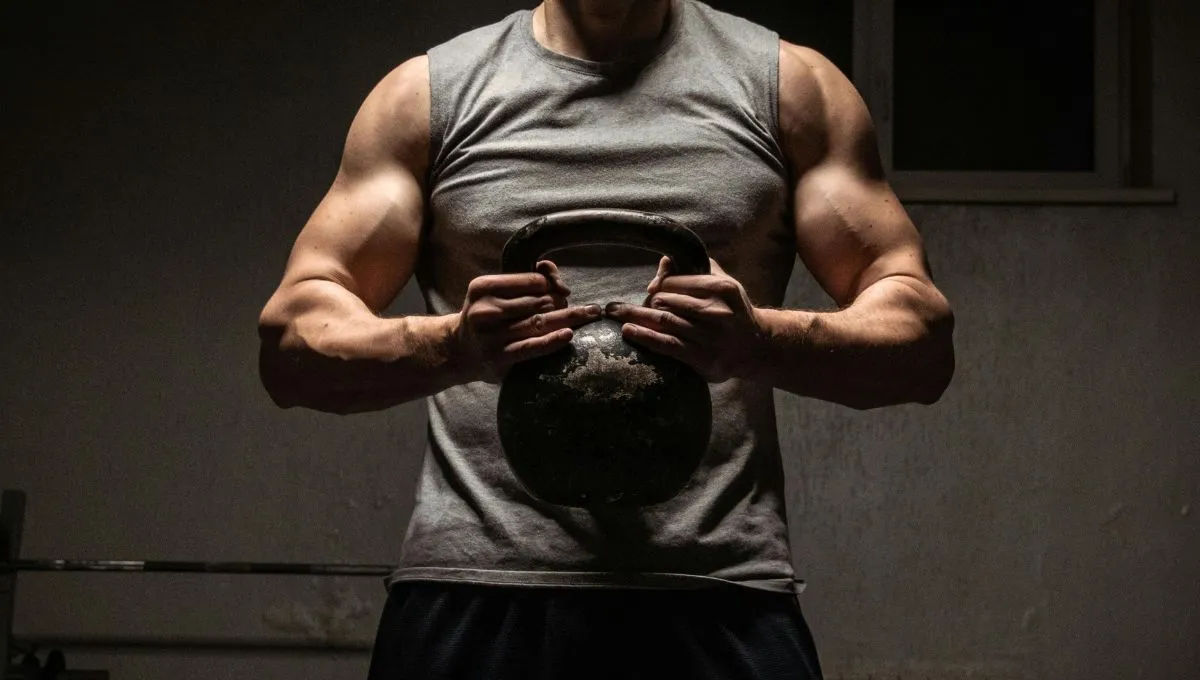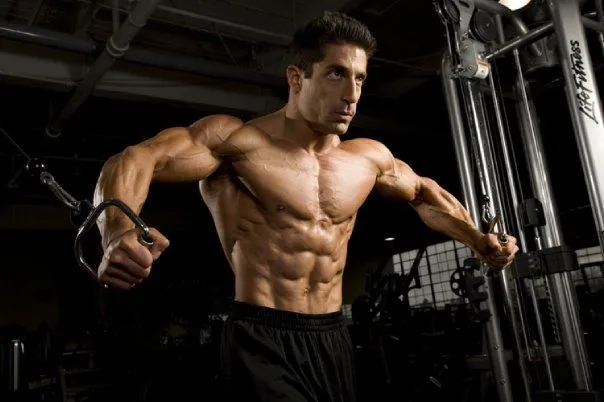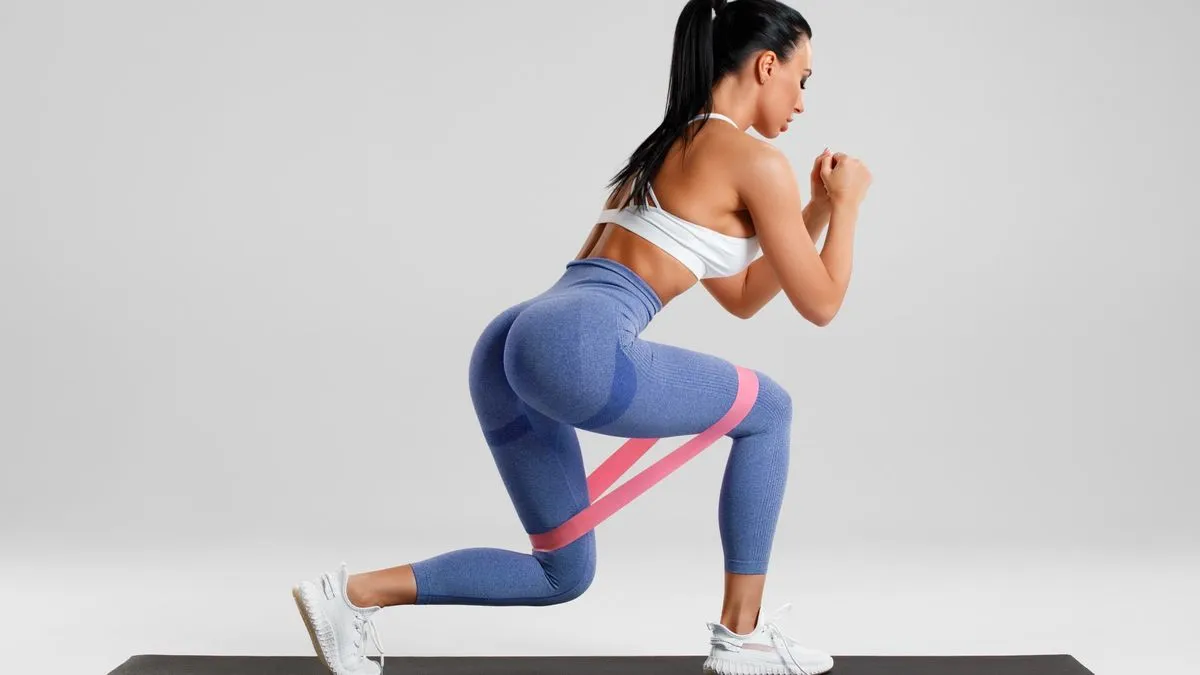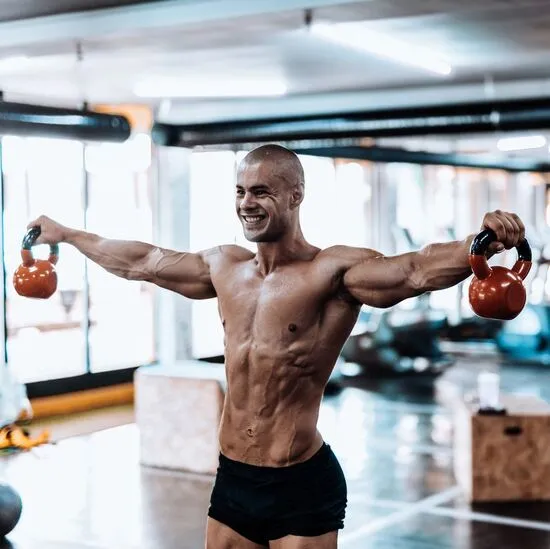8 Best Tricep Exercises for Mass, Strength, and Arm Balance
May 22, 2025

Let’s get one thing straight: if your arms look decent from the front but disappear from the side, your triceps are undertrained. While biceps might get the spotlight, it’s the triceps that really fill out your sleeves and anchor your pressing strength. And if you're already hitting heavy bench work or grinding through bicep curls but your arms still look flat, this is probably where you're falling short.
The best tricep exercises don’t just tack on volume at the end of chest day, they strategically target all three heads of the muscle: the long, lateral, and medial. Together, these make up over two-thirds of your upper arm. That means stronger presses, better lockouts, and a shape that actually complements your chest and biceps work.
This guide isn’t about filler movements. Each exercise here earns its place, whether it’s building thickness, improving control, or giving your arms the kind of shape that gets noticed. We'll cover compound staples, isolation drills, and finishers you can plug directly into your current routine. Whether you're running push-pull-legs, upper-lower, or a dedicated arm day.
Before we break down the lifts, let’s talk about why training your triceps smart (not just hard) is key to building a complete upper body.
What's In This Triceps Guide
- Why You Need to Train Your Triceps Properly
- Best Overall Tricep Exercise
- Best Dumbbell Tricep Exercise
- Best Cable Tricep Exercise
- Best Triceps Exercise for Mass
- Best Triceps Isolation Exercise
- Best Bodyweight Triceps Exercise
- Best Triceps Exercise for Beginners
- Best Triceps Exercise for Long Head
- How to Structure a Triceps Workout That Actually Delivers
- FAQs About Triceps Training
- Final Set: Build Triceps That Back Up YourStrength
Why You Need to Train Your Triceps Properly
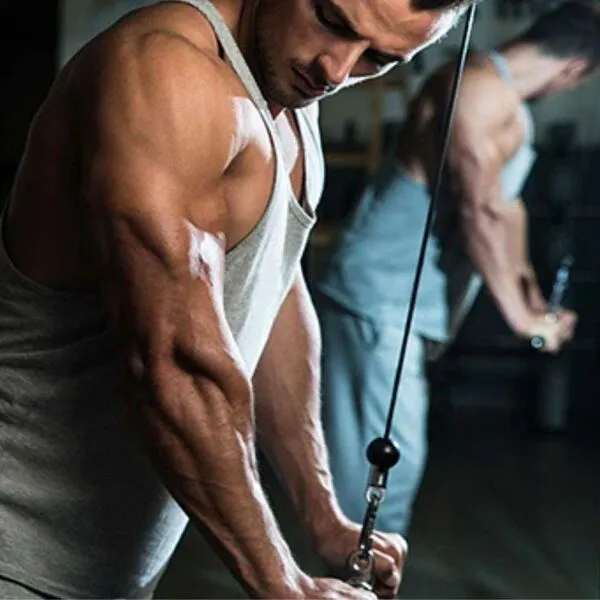
Most people think big arms start and end with curls. But the truth is, triceps do more of the heavy lifting. They’re the prime movers in pressing exercises, and without strong triceps, your chest workouts stall, your overhead pressing suffers, and your arms never really fill out.
It’s Not Just About Bigger Arms
Sure, triceps give your arms that full, rounded look from the side but they’re not just for show. They control your elbow extension, which means every push you make whether it’s on the bench, in a dip, or even in a shoulder press relies on tricep strength. And if you’re already putting in the work on biceps exercises or hammering incline presses for chest, skipping triceps is like building a house with no frame.
Triceps Matter More Than You Think for Pressing Power
Ever failed a rep halfway up on a bench press? That wasn’t your chest giving out. It was your triceps. The top half of nearly every pressing movement depends on triceps strength. Whether you’re benching, military pressing, or doing weighted dips, underdeveloped triceps are the limiting factor more often than not.
Strong triceps mean better lockouts, smoother bar paths, and more force transferred from shoulder to hand. They’re also stabilizers during compound lifts, which means they keep you safer when things get heavy.
Best Overall Tricep Exercise
When it comes to building tricep mass and strength that carries over to other lifts, you need more than just a pump. You need load, control, and a movement that stresses all three heads of the triceps under real resistance. This isn’t an isolation finisher; it’s a compound builder.
Close-Grip Bench Press
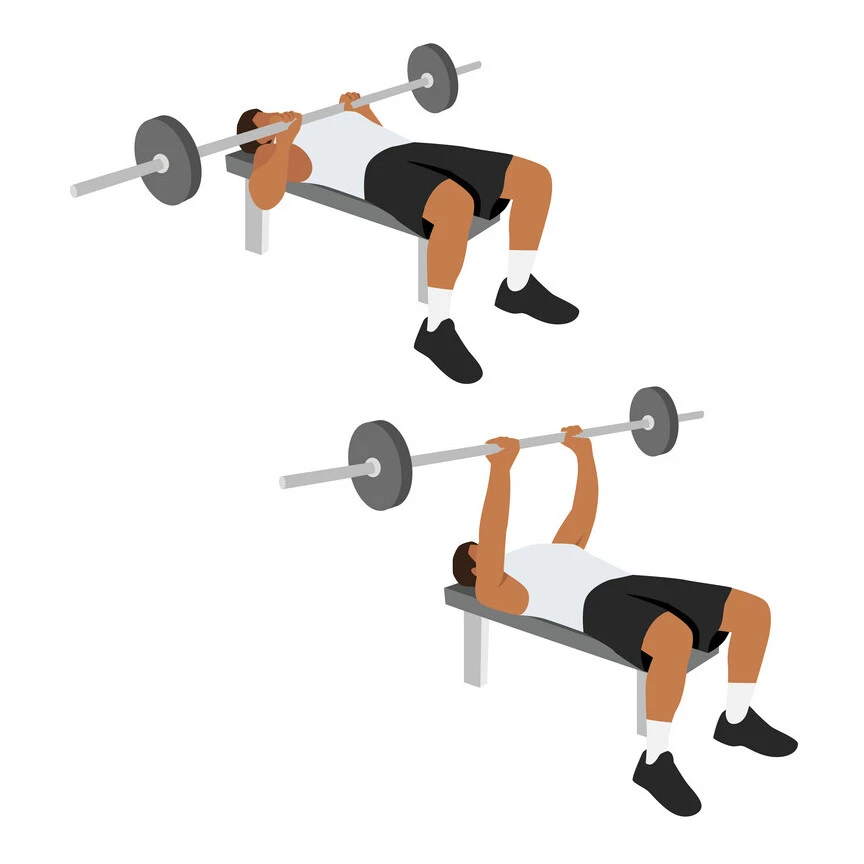
The close-grip bench press isn’t flashy, but it’s brutally effective. By narrowing your grip just inside shoulder width, you shift the emphasis from the chest to the triceps specifically the medial and lateral heads. That means more tricep activation during every inch of the press, especially at the lockout where triceps take over.
Unlike cable or dumbbell movements, this variation lets you move serious weight. It’s scalable for strength, perfect for hypertrophy, and easy to track over time. Plus, it reinforces elbow control and bar path mechanics, which directly benefit your standard bench press and overhead press numbers.
You’ll still get some chest involvement. It’s a pressing movement after all but the targeted load on your triceps is what makes this a top-tier choice.
Programming Tip: Treat this like a main lift: 3–5 sets of 5–8 reps with progressive loading. Keep your elbows close to your ribs, stay tight through the upper back, and focus on pressing through the triceps, not bouncing the bar.
Best Dumbbell Tricep Exercise
Barbells let you load up heavy, but dumbbells give you freedom. That freedom isn’t just about joint comfort. It allows for better positioning, deeper range of motion, and individual arm engagement. For triceps, that means more stretch, more squeeze, and fewer imbalances hiding in the background.
Dumbbell Overhead Triceps Extension
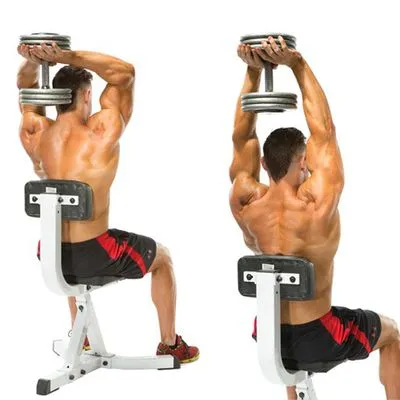
The dumbbell overhead triceps extension is one of the most direct ways to hammer the long head of the triceps, which runs along the back of your upper arm and gives your arm that meaty, full look from all angles. Going overhead stretches the long head under load, forcing it to activate through the entire range something horizontal pushing just doesn’t do.
This movement can be done seated or standing, with one or two hands, depending on how you like to train. The key is keeping your elbows fixed and letting the dumbbell drop deep behind your head to maximize the stretch without losing control.
It’s also a great way to isolate the triceps without overloading your wrists or shoulders, especially if you’re working around joint issues or just want a movement that focuses purely on muscle tension.
Programming Tip: Use moderate weight and aim for 10–12 reps per set. Avoid flaring the elbows and keep the tempo steady. If you're going heavy, opt for the seated version for more stability. Supersetting this with a press (like incline dumbbell) is a nasty, effective combo.
Best Cable Tricep Exercise
Free weights build foundational strength, but cables give you something barbells and dumbbells can't: constant tension. That tension, especially through the full range of motion, makes cables a powerful tool for adding shape and detail to your triceps, particularly in the lockout phase.
Rope Triceps Pushdown
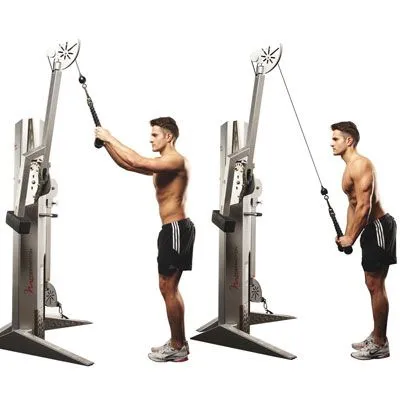
The rope triceps pushdown is a staple for a reason. It locks you into position, isolates the triceps, and lets you target the lateral and long heads with precision. Using a rope attachment instead of a straight bar adds range and control. At the bottom of each rep, you can split the rope and fully contract the triceps, finishing with that key “kick out” movement most other tricep exercises miss.
You’re not moving huge weight here and you don’t need to. This is about focused reps, strict form, and creating that mind-muscle connection that forces the triceps to fire through every inch.
It also plays well at the end of a push workout, when your pressing strength is tapped and you still want to finish with quality volume.
Programming Tip: Keep your elbows pinned to your sides and avoid turning the movement into a shoulder or lat pulldown. Think of each rep as a flex, not just a press. Go for higher volume: 3–4 sets of 12–15 reps, pausing briefly at the bottom before controlling the return.
Best Triceps Exercise for Mass
When you're chasing size, the goal isn’t just to feel a pump. It’s to move enough resistance through a full range of motion to trigger real growth. And sometimes, your own bodyweight when used correctly can deliver just as much overload as a barbell.
Weighted Dips

The weighted dip is one of the most brutally effective triceps mass-builders out there. By leaning slightly forward and keeping your elbows tucked in, you shift the load directly onto the triceps, especially the lateral head. Adding weight via a belt, dumbbell between the legs, or even a backpack instantly turns this bodyweight move into a high-tension press.
What makes dips special is their ability to stress the triceps under a natural range of motion. You’re not fixed into a machine or dealing with awkward bar paths. You’re moving your own frame, and that activates stabilizers while targeting the triceps directly.
For mass, it hits hard. And unlike some cable or isolation work, you’ll feel it the next day especially in the outer portion of the upper arm.
Programming Tip: Start with bodyweight and build up to added resistance once you can hit 12–15 strict reps. For size, aim for 3–4 sets of 8–10 reps with slow, controlled movement. If your shoulders are sensitive, keep the range a little shorter at the bottom and stay upright through the rep.
Best Triceps Isolation Exercise
When you want to eliminate momentum, reduce involvement from secondary muscles, and place pure, focused stress on the triceps, isolation is the way to go. This is where you fine-tune size, fix imbalances, and hit muscle fibers that pressing alone might miss.
Skull Crushers (Lying Triceps Extensions)
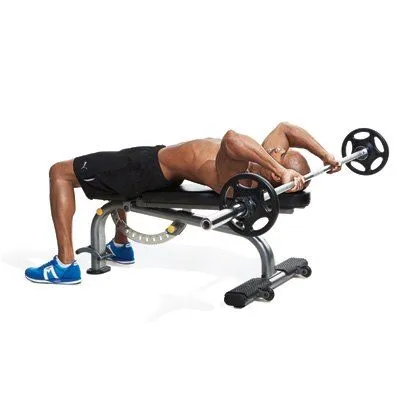
Skull crushers also known as lying triceps extensions are a direct hit to the long and lateral heads of the triceps. Performed with an EZ curl bar or dumbbells, this movement emphasizes controlled elbow extension while keeping your shoulders mostly out of the equation.
The key to skull crushers is keeping the elbows fixed in one position while lowering the weight just past your forehead. That long-range eccentric phase stretches the triceps under tension, which is one of the strongest triggers for muscle growth. It’s a classic bodybuilding staple for a reason.
You can also adjust the angle by using a slight incline or switching to dumbbells to keep each arm working independently.
Programming Tip: Place skull crushers mid to late in your workout after your pressing movements. Focus on sets of 10–12 reps with moderate weight. Don’t let your elbows flare out. Keep them tight and let the triceps handle all the load. Use a controlled descent and avoid bouncing the bar off your forehead (you'll only do that once).
Best Bodyweight Triceps Exercise
Sometimes simplicity wins. If you want a triceps movement that needs zero equipment but still delivers burn and function, a smart variation on a push-up can be just as effective as cables or machines when done with proper form and intent.
Diamond Push-Up
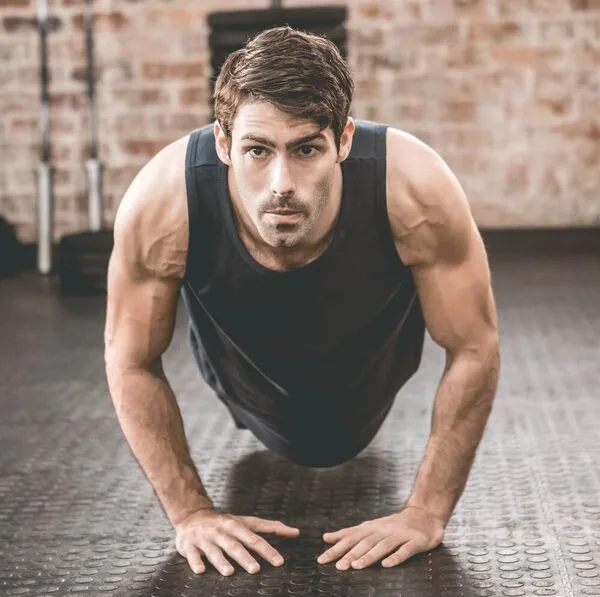
The diamond push-up changes the game by narrowing your hand placement and forcing the triceps to do more of the work. By bringing your thumbs and index fingers together to form a diamond shape beneath your chest, you reduce chest involvement and increase triceps activation.
Unlike standard push-ups, the diamond version demands more elbow extension and shoulder stability, which makes each rep more intense on the triceps. It's perfect for high-rep finishers, home workouts, or warm-up sets that activate the arms without stressing the joints.
The movement also encourages better core and glute engagement since maintaining a tight body line is essential for clean reps.
Programming Tip: Use diamond push-ups as a burnout or warm-up. Aim for 2–3 sets to near failure, maintaining full range and tight form. To make them harder, elevate your feet, wear a weighted vest, or slow down the tempo to increase time under tension. Rest no more than 30–45 seconds between sets to really light up the triceps.
Best Triceps Exercise for Beginners
Starting out doesn’t mean you should settle for fluff exercises. The key is finding a movement that lets you feel your triceps working while learning proper form, control, and joint positioning. This one checks all those boxes and it’s accessible in nearly any gym or home setup.
Bench Dips

Bench dips are simple, scalable, and surprisingly effective when performed correctly. With just a bench, box, or even a sturdy couch, you can load your triceps through a full range of motion without needing much space or equipment. The movement teaches elbow extension control and builds foundational strength in the lateral and medial heads of the triceps.
One reason dips work so well for beginners is that you can easily modify them: keep your knees bent and feet flat to reduce load, or extend your legs to increase difficulty. You’re using your own bodyweight, which helps you stay connected to the movement and better understand muscular engagement.
Programming Tip: Start with 3 sets of 10–12 reps using controlled speed. Avoid letting your shoulders roll forward. Keep your chest tall and your elbows moving straight back. As you get stronger, raise your feet or add a plate on your lap to progress without jumping straight to weighted dips.
Best Triceps Exercise for Long Head
If your arms look decent from the side but fall flat when viewed head-on, there’s a good chance your long head isn’t pulling its weight. The long head is the largest portion of the triceps, and it’s only fully engaged when your arms are extended overhead or pulled behind the body meaning your average pushdown or close-grip press won’t be enough on its own.
EZ Bar Overhead Extension
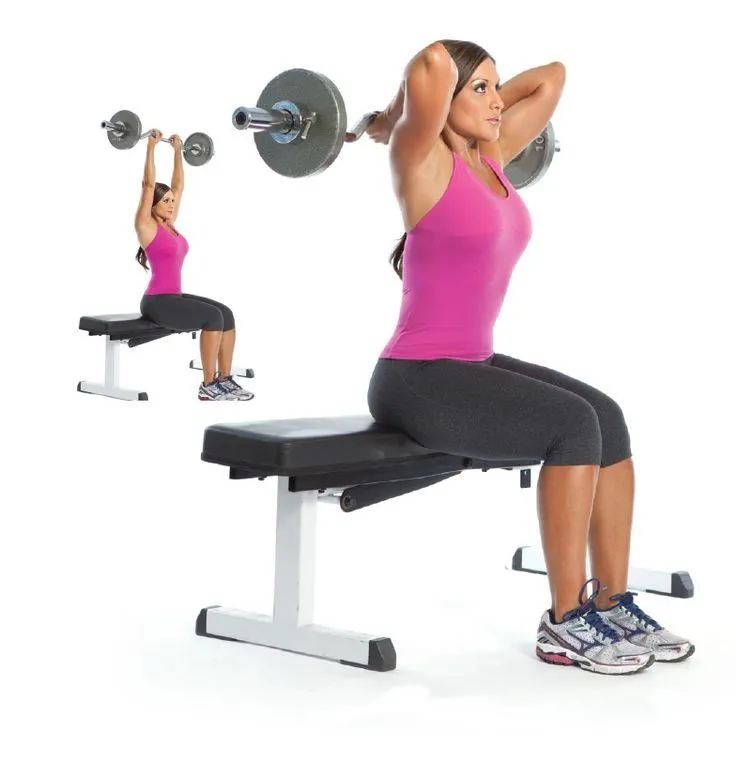
The EZ bar overhead triceps extension is one of the most direct ways to hit the long head with solid load and stretch. Unlike straight bar options, the EZ curl bar allows for a more natural grip angle that reduces wrist strain and helps you stay consistent with heavier weights.
What sets this movement apart is the overhead positioning, which lengthens the long head under tension and forces it to generate force through a challenging range. That deep stretch at the bottom, when controlled, creates the kind of mechanical tension that drives growth.
Plus, using an EZ bar makes it easier to maintain control through the elbows, reducing the tendency to flare or shift load into the shoulders.
Programming Tip: Place this lift early in your triceps session if your long head is underdeveloped. Use moderate weight and go for 3–4 sets of 8–10 reps. Keep the movement strict lower until the bar is just behind your head, pause briefly, and press back up without letting your elbows wander forward.
How to Structure a Triceps Workout That Actually Delivers
Picking solid movements is step one but knowing how to organize them is what turns a good session into real results. A well-built triceps workout should hit all three heads of the muscle, balance pressing with isolation, and match your overall training goal. Whether that’s strength, size, or muscular endurance.
Volume, Frequency, and Recovery
Triceps are involved in nearly every pressing movement, so if you’re already training chest and shoulders, you’re getting indirect volume. But to grow, they need direct work too. If you’re training triceps once a week, hit them with 12–15 total sets. If they’re split across two sessions (like a push/pull/legs setup), 6–8 quality sets per session will do the job.
Don’t just hammer them with presses, include exercises from different angles. A long head movement (like overhead extensions), a heavy compound (like close-grip bench), and a focused isolation drill (like cable kickbacks) will cover all the bases.
Mixing Compounds and Isolation for Full Development
Start with your compound lift. This is where you’re freshest and can push the most weight. Move into accessory work that hits what your main press missed. Use cables or dumbbells to dial in form, tempo, and contraction. Finish with a burnout or high-rep movement to pump blood into the muscle and reinforce mind-muscle connection.
Rotate your movements every 4–6 weeks. Not because the muscles “get bored,” but because your joints need variety, and different angles challenge the triceps in new ways.
Here’s a sample layout:
- Close-Grip Bench Press – 4x6
- Dumbbell Overhead Extension – 3x10
- Rope Pushdown – 3x12–15
- Cable Kickbacks – 2x20 (each arm, minimal rest)
FAQs About Triceps Training
Even with a solid plan, questions always come up. How often should you train triceps? Can bodyweight really build muscle? And what’s the deal with all these different “heads” of the triceps? Here’s a no-BS breakdown of what lifters actually need to know.
How many times per week should I train triceps?
Twice a week hits the sweet spot for most people especially if one of those sessions is focused on compound lifts and the other leans into isolation and high reps. Training them once a week can still work, but if you’re not also pressing heavy during chest and shoulder workouts, you might not be giving your triceps enough attention.
Should triceps be trained with chest or shoulders?
There’s no wrong answer. It depends on how your split is set up. Training triceps after chest makes sense because they’re already warmed up from pressing. Just don’t expect to hit them with max effort right after a heavy bench day. Pairing triceps with shoulders (especially on a push day) works well too. If you're doing a dedicated arm day, that's the best chance to train them fresh.
What’s the difference between long, medial, and lateral heads?
All three heads work together to extend the elbow, but they get activated differently depending on angle and arm position. The long head responds best to overhead work. The lateral head is most active during press-downs and lockouts. The medial head comes into play on lighter loads and deeper ranges, like in high-rep extensions or close-grip pressing. Training all three ensures fuller arms and more pressing power.
Can I build big triceps with just bodyweight?
To a point, yes. If you use smart variations like diamond push-ups, bodyweight skull crushers, and dips. But eventually, you’ll need to add resistance or increase volume to keep progressing. That could mean weighted vests, tempo manipulation, or pairing bodyweight with cables or bands.
Are compound movements enough for triceps growth?
Compound lifts like bench press and overhead press involve the triceps, but they don’t isolate them fully. For complete development, you’ll need to include movements that specifically target the triceps through a full range especially those that load the long head in stretched positions. Think of compounds as the base, and isolation as the finishing work that rounds out your arms.
Final Set: Build Triceps That Back Up Your Strength
A strong pair of triceps doesn’t just finish off your bench press. It finishes off your physique. These muscles don’t get the same hype as biceps, but they’re the ones doing the work in every push, lockout, and overhead movement. If your triceps aren’t keeping up, your entire upper body performance takes a hit.
It’s not about doing every exercise on this list. It’s about picking the right ones for your training goals, applying them with intent, and giving your triceps a reason to grow. That means pressing heavy, stretching under load, isolating with control, and finishing with purpose. When you attack all three heads of the triceps consistently, you’ll feel the carryover not just in arm size, but in how much weight you move and how stable your upper body feels.
So whether you're building out an arm day, adding extra volume to push day, or trying to fix that flat lockout on your bench, keep your triceps sharp. They’re the muscle behind the muscle. Treat them like it.

